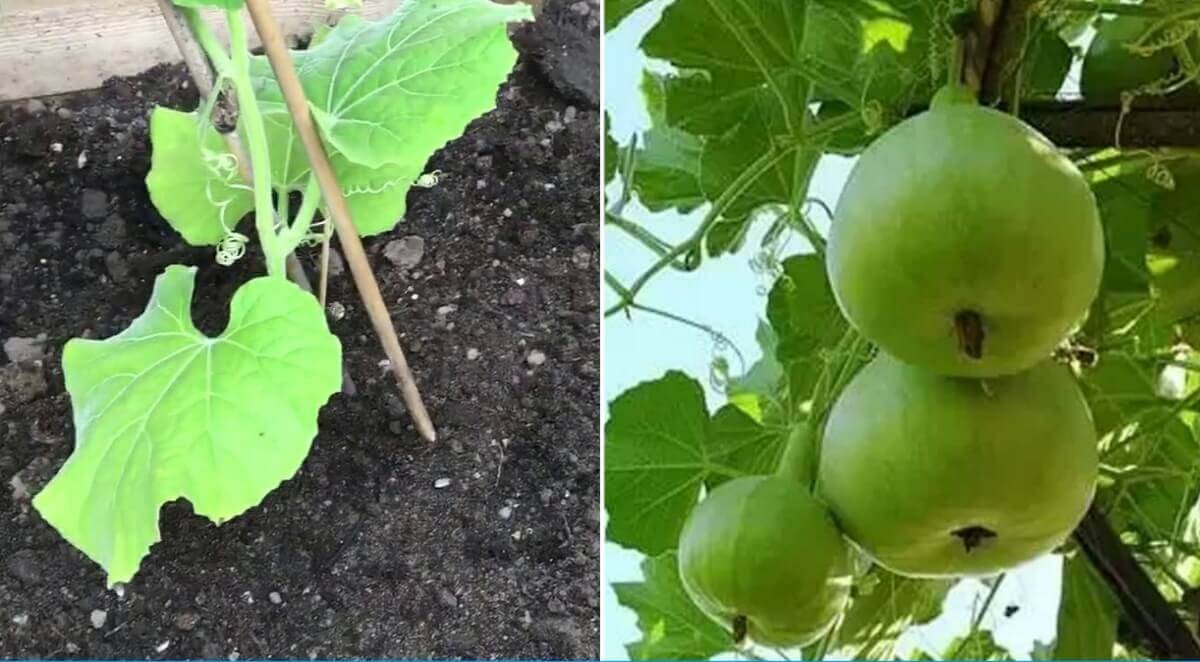
Tinda, also known as the Indian round gourd, apple gourd, Indian baby pumpkin, or tinda gourd, is a squash-like cucurbit that is native to India and belongs to the family Cucurbitaceae. An annual vegetable called tinda is well-liked in India, Pakistan and other South Asian nations.
Tinda is referred to as an apple gourd in English. It goes by the names tindsi, tindi, tinday, temsi, dhemase, and meha in Nepal, Rajasthan, Punjab, Maharashtra, and other areas and languages.
Similar in appearance to summer squash, it is used in curries, spicy-filled vegetables, spicy stuffed vegetable pickles, and many more upscale cuisines. Even its seeds are roasted and consumed. The fruit is a spherical, flat-topped ball that is between 5-8 cm in diameter, light green in colour, and weighs around 50 gm. Like other cucurbits, the plant is a prolific vine that is planted as an annual.
Classification
Scientific name: Benincasa fistulosa
Common name: Tinda, Round Gourd, Apple gourd
Soil: Sandy Loam Soil
Soil pH: 6.5-7.5
How to grow Tinda (Apple gourd)?
Location and Soil
In sandy or completely fertile soils, tinda thrives and develops strong roots. Its plant thrives in sandy, loamy, well-drained soil, which is ideal for the growth and good harvest of organic matter. The pH range that Tinda performs best in is 6.5 to 7.5, which is excellent for this.
Select a location for this where the sun shines directly down and the minimum daytime temperature is about 60 degrees Fahrenheit.
Temperature
It thrives in lengthy, hot weather in tropical or subtropical climates. If you wish to plant, you can do it in January or February by sowing the seeds. You can light a fire indoors in a cold climate zone and extinguish it once the cold outbreak has passed. The optimal soil temperature for seed germination should be between 25 and 32 degrees Celsius.
Different Varieties of Tinda
1. Punjabi tinda
It is a medium-sized fruit with a shiny look that is grown in PAU, Ludhiana. The seeds are few and the flesh is white in colour. It typically yields 8 to 10 fruits and can generate 1.8 tonnes of fruit per acre in just 2 months.
2. Arka Tinda
This variety was created by the Indian Institute of Horticulture Research, Bangalore. It is an early cultivar, with a rounded form, light green skin, and soft hairs on the vegetable after it is harvested. The fruits can be collected five days after pollination.
3. Anamalai Tinda
This tinda type was created in the Southern region of the nation, and it contains relatively tiny light-green vegetables.
4. Swati
It is an F1 hybrid tinda cultivar with vigorous growth and vines that range in length from 175 to 225 cm. After almost two months of seeding, the dark green fruits are ready for harvest.
Prepare the field
Before farming tinda, the land must be well-tilled to ensure healthy development. The land must be ploughed to a fine tilth and long, 1.5 cm apart channels must be created. It is crucial to make sure that the ground is devoid of any uninvited plants. To get rid of undesired weeds and make it possible to preserve rainfall, it is crucial to plough or harrow the soil.
Propagation
Typically, seeds are planted from January to February.
Sowing, Nursery and Planting
The seeds can be sown directly on the flat ground or ridges after the soil has been effectively prepared by ploughing, ridging, or harrowing. To cultivate tinda, hills or ridges are created, and 3 or 4 seeds are sowed per hill at a depth of 2-3 cm. For hill planting, a mound of dirt 1" in diameter and 3 to 4 inches tall is created. Row planting, which involves placing seeds in a row with the right amount of space between them, is another method of growing tinda. It usually takes 3 to 4 weeks for seeds to develop into seedlings, after which 1 or 2 seedlings per hill can be planted.
Seed Rate
The number of seeds needed to plant an acre or hectare varies on a variety of variables, including the viability of the seeds and the state of the soil. The typical seed rate for tinda farming is 500 to 700 g of seeds per acre.
Spacing
The seeds are sown on both sides of the bed's 1.5 metre width. The recommended seed spacing is around 18 inches.
Cropping Methods
Tinda is a summer crop that can successfully grow by itself. It can also be produced in mixed cropping with desert legumes including cluster bean, moth bean, cowpea, and bajra in addition to growing alone. A good yield is produced by tinda cultivation under good rains.
Application of Fertilizers
Apply FYM 10 t/ha, N 20 kg/ha as basal and N 20 kg/ha 30 days after sowing. Apply Azospirillum and Phosphobacteria @ 2 kg/ha and Pseudomonas @ 2.5 kg/ha along with FYM 50 kg and neem cake @ 100 kg before the last ploughing.
Harvesting and Yield
When tinda is fully grown and in the green stage, with the seeds within the vegetable still tender, its diameter should be between 10 and 12 cm. The fruit can be picked in as little as two weeks after it has been developed, although that much depends on the humidity and temperature levels. The stalk should be clipped short to prevent it from significantly affecting the nearby fruits. Four fruits should be able to be gathered from each plant if harvesting is done correctly. The production in India is close to 4 tonnes per acre.
Tinda's Post-Harvest Technology
One of the stages of tinda post-harvest management is cooling. Other procedures include cleaning, sorting, and packaging. After the vegetables are picked, they are cleaned correctly using a variety of methods, and then sorted, usually by hand, to remove any damaged parts. Tinda fruit's delicate skin is protected by the meticulous packing of the fruit in cardboard boxes.











